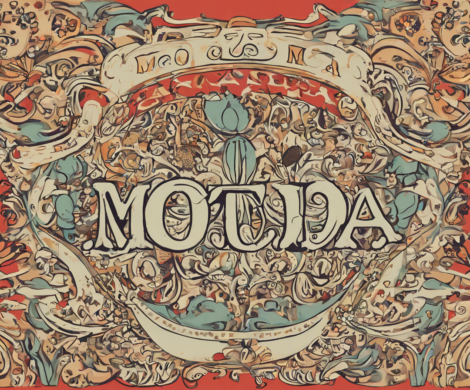Unveiling Wu Tang Clan Members’ True Identities

The Wu-Tang Clan is one of the most iconic and influential hip-hop groups in music history. With their unique style, lyrical prowess, and mysterious persona, the group has amassed a cult-like following over the years. One of the most intriguing elements of the Wu-Tang Clan is the air of mystery surrounding its members’ true identities. In this article, we will delve deep into the true identities of the Wu-Tang Clan members and uncover the faces behind the masks.
The Formation of the Wu-Tang Clan
Before we uncover the true identities of the members, let’s take a quick look at how the group came together. The Wu-Tang Clan was formed in Staten Island, New York in the early 1990s. The group was led by RZA, who brought together a diverse group of talented artists to form a supergroup like no other.
RZA (Robert Fitzgerald Diggs)
Let’s start with the mastermind behind the Wu-Tang Clan – RZA. Born Robert Fitzgerald Diggs on July 5, 1969, in Brownsville, New York, RZA is not only a rapper but also a record producer, actor, and director. Known for his distinctive production style and philosophical lyrics, RZA’s influence on the group is undeniable.
GZA (Gary Grice)
Next up is GZA, also known as Gary Grice. Born on August 22, 1966, in Brooklyn, New York, GZA is one of the oldest members of the Wu-Tang Clan. His sharp lyricism and intellectual approach to rap have earned him a reputation as one of the most respected MCs in the game.
Ol’ Dirty Bastard (Russell Tyrone Jones)
Perhaps one of the most colorful members of the group, Ol’ Dirty Bastard – real name Russell Tyrone Jones – was born on November 15, 1968, in Brooklyn, New York. Known for his eccentric personality and unorthodox delivery, ODB’s impact on the Wu-Tang Clan is undeniable.
Method Man (Clifford Smith Jr.)
Method Man, born Clifford Smith Jr. on March 2, 1971, in Hempstead, New York, is not only a member of the Wu-Tang Clan but also a successful solo artist and actor. With his charismatic persona and smooth flow, Method Man quickly became one of the standout members of the group.
Raekwon (Corey Woods)
Raekwon, whose real name is Corey Woods, was born on January 12, 1970, in Brooklyn, New York. Known for his gritty street tales and vivid storytelling, Raekwon’s lyrical prowess helped solidify the Wu-Tang Clan’s reputation as one of the best rap groups of all time.
Ghostface Killah (Dennis Coles)
Ghostface Killah, born Dennis Coles on May 9, 1970, in Staten Island, New York, is another iconic member of the Wu-Tang Clan. With his vivid storytelling, raw emotion, and unique flow, Ghostface Killah has cemented his status as one of the greatest MCs in hip-hop history.
Inspectah Deck (Jason Hunter)
Inspectah Deck, whose real name is Jason Hunter, was born on July 6, 1970, in Brooklyn, New York. Known for his intricate wordplay and razor-sharp delivery, Inspectah Deck’s contributions to the group cannot be overlooked.
U-God (Lamont Hawkins)
U-God, born Lamont Hawkins on October 11, 1970, in Brooklyn, New York, is another integral member of the Wu-Tang Clan. With his deep voice and aggressive flow, U-God brought a unique energy to the group’s dynamic.
Masta Killa (Elgin Turner)
Masta Killa, born Elgin Turner on August 18, 1969, in Brooklyn, New York, is known for his smooth flow and thoughtful lyricism. A late addition to the group, Masta Killa quickly proved his worth among his talented peers.
Cappadonna (Darryl Hill)
Cappadonna, born Darryl Hill on September 18, 1969, in Brooklyn, New York, is often considered an honorary member of the Wu-Tang Clan. His unique style and vivid storytelling added another layer of depth to the group’s already impressive roster.
Frequently Asked Questions (FAQs)
1. Are all the members of the Wu-Tang Clan related?
No, the members of the Wu-Tang Clan are not all related. While some members are cousins, like RZA and GZA, the majority of the group is made up of friends who grew up together in New York City.
2. How did the Wu-Tang Clan come up with their unique stage names?
The members of the Wu-Tang Clan adopted their stage names as a way to create a sense of mystique and individuality. These names often reflect their personalities, styles, and influences.
3. Have any Wu-Tang Clan members pursued solo careers?
Yes, many members of the Wu-Tang Clan have released solo albums and pursued successful solo careers in addition to their work with the group. Artists like Method Man, Ghostface Killah, and Raekwon have all achieved significant success as solo artists.
4. What is the significance of the Wu-Tang Clan logo?
The Wu-Tang Clan logo, which resembles a stylized “W,” is inspired by a combination of Shaolin sword styles and the “Wu-Tang” swordsman that the group members studied under. It has become an iconic symbol of the group and is recognized worldwide.
5. How has the Wu-Tang Clan influenced hip-hop culture?
The Wu-Tang Clan’s influence on hip-hop culture is immense. From their innovative production techniques to their lyrical prowess and entrepreneurial spirit, the group has inspired generations of artists and shaped the landscape of hip-hop music.
In conclusion, the Wu-Tang Clan is more than just a hip-hop group – they are a cultural phenomenon. By uncovering the true identities of the members and exploring their individual contributions to the group, we gain a deeper appreciation for their artistry and legacy. The Wu-Tang Clan will forever remain legends in the world of music, continuing to inspire and influence artists for years to come.






